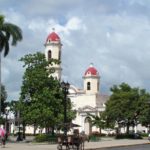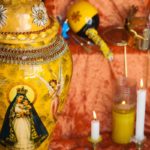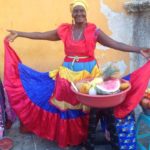Santería is a religion you might not have heard of before, due to it not being particularly well known or practiced much throughout the world, especially today.
And, it’s not rooted in Indo-European polytheism (the belief in more than one god) like most of the other relatively well-known religions that don’t include the three main ones of Christianity, Judaism or Islam.
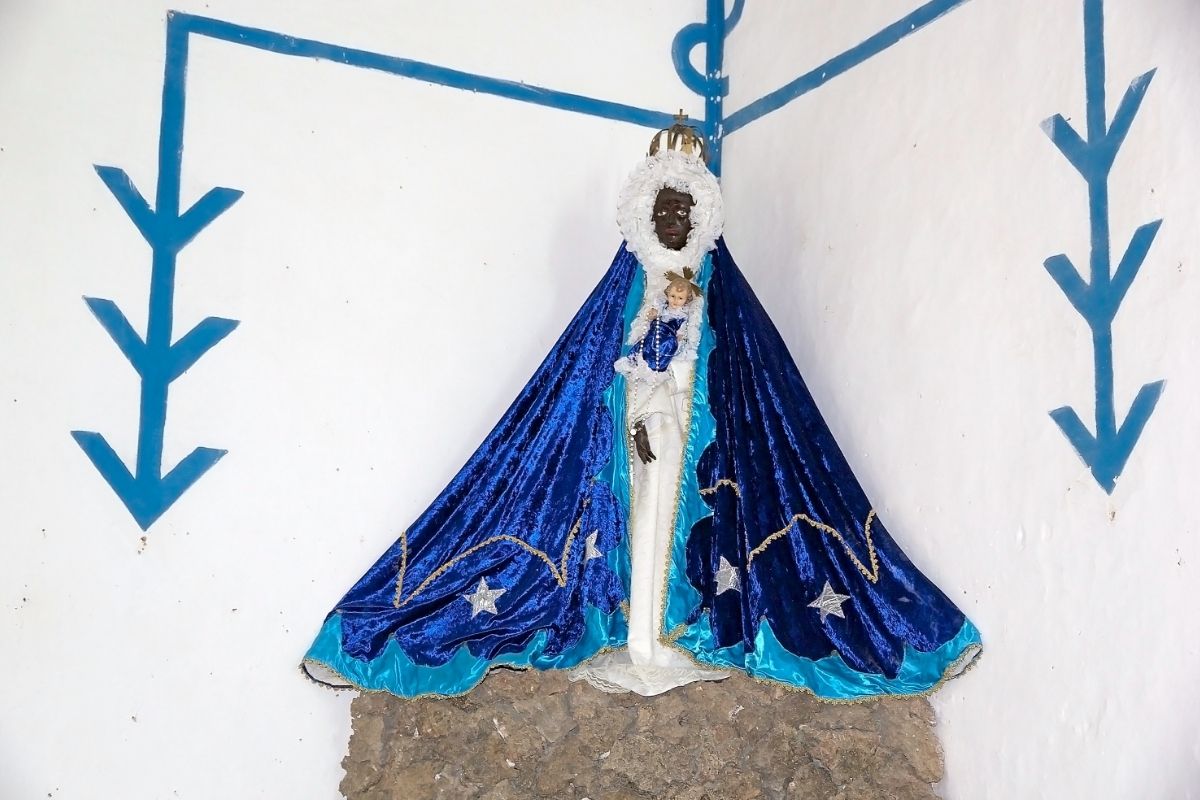
The Santería religion is actually, in its essence, a fusion of African folk beliefs and Roman Catholicism that has been an integral part of Cuban culture and society for many centuries.
It’s been the most prevalent religion on the island since its creation, and still is, even today.
So, if you’ve never come across the Santería religion before, or you’ve heard of it but don’t know much about it, don’t worry, because we’re here to fill you in on all of the missing pieces.
In this guide we’ll explain all about the history of Santería, from its roots to the beliefs of the people who follow it!
The Roots Of Santería
The roots of Santería – which means ‘the way of the Saints’ – can be traced back to the religion known as Lucumí, which was once practiced by tribes from Benin and Nigeria called the Yoruba tribes.
These tribes were then taken when those countries were colonized in the 17th century as slaves to Cuba so that they could work in the sugar plantations over there.
The Church and the Spanish plantation owners in Cuba were of Roman Catholic faith and they tried to make the Yoruba tribes convert to Catholicism.
The tribes did actually accept a lot of the missionary teachings, but, on the whole, they didn’t think they provided complete sufficient religious fulfillment.
This led to them continuing to practice their own rituals, which they considered more useful and successful.
And, after a while, the Catholic Church allowed them to create their own ethnic clubs, known as the Cabildos, which became secret religious organizations where the religion of Santería was eventually created, evolving from the combination of African religion and Catholicism.
Due to this evolution, Santería is classed as a syncretic religion, meaning it incorporates the elements of a mix of different faiths and cultures.
At its heart it’s a fusion of the Yoruba tribe’s West African spirituality, Caribbean traditions, and certain individual components of Catholicism.
The Growth of Santería In Cuba
Santería has grown enormously in Cuba since the days when it was practically a secret religion only practised amongst the African slaves on the island.
It’s grown far beyond its complex Yoruba and Catholic origins and has now developed into a proper religion in its own right.
It used to be dismissed as a religion that was practiced only by the poor and the uneducated in Cuba, and a certain level of secrecy surrounding practicing it still remained in place for a long time – this mindset went on for centuries, until the Cuban revolution came about from 1953 to 1959.
After the revolution, Santería became openly acknowledged by everyone, but was still met with criticism by the government, who thought of it as being folksy witchcraft.
However, in the 80s, it made a resurgence and the people of Cuba and elsewhere across the Americas developed a great interest in it.
So, despite the Cuban government’s initial resistance against it, they started to tolerate it more and more and it’s been allowed to flourish ever since, particularly within the last 15 years or so.
It was even rumored that Fidel Castro was a believer in the religion.
It’s now estimated that today in Cuba around 80 to 90 percent of Cubans seek out Santería priests, meaning it’s ended up becoming the most prevalent religion in the whole of Cuba.
The Beliefs Of Santería Followers
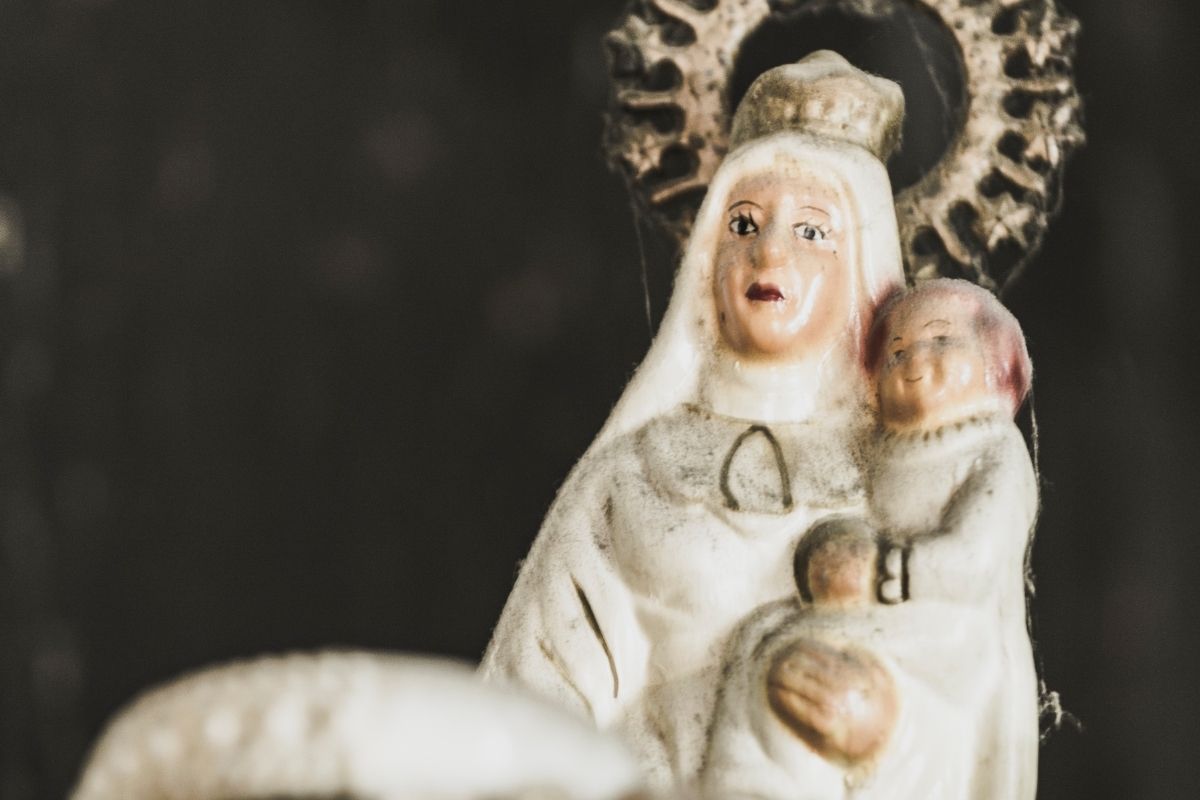
The Santería religion is based around building a relationship between human beings and the powerful spirits that they believe in called Orishas, who are actually mortal rather than immortal.
They believe that there is only one god who created the entire universe, called Olodumare, and that the Orishas are a manifestation of this god.
Followers of Santería also believe that the Orishas will provide them with help throughout their lifetimes if they worship them and complete the necessary rituals, which will in turn mean that their destiny will be played out just like Olodumare had planned out for them before they were even born.
Roman Catholic Influences In The Santería Religion
People who follow Santería are usually also Roman Catholics, and the main way in which you can see that Catholicism makes up part of the Santería religion is through the saints that they believe in.
Some of the Orishas are extremely similar to a few of the key Catholic saints. Here, we’ve listed these Catholic saints and the Santería saints they’re likened to:
- Saint Barbara / Shangó – They’re concerned with justice and strength, and are associated with fire and lightning.
- Our Lady of Charity / Ochún – Ochún is the goddess of the river and they’re both linked with water, sweets, money, yellow and love.
- Saint Lazarus / Babalú-Ayé – They’re associated with those who are sick or ill.
Santería Today
As mentioned previously, Santería is the most practiced religion in the whole of Cuba.
Not only this, but many people from nearby countries within the Americas have taken on the religion and it’s believed that around a million Americans now practice it.
However, the number is likely to be higher given the general stigma that still surrounds religions that aren’t in the mainstream.
To become a part of the Santería faith, people must pass a series of tests and requirements before being allowed to join.
They will be given training practices involving herbalism, divinatory work and counseling.
It is then up to the Orishas whether a candidate has either passed or failed the tests.
Final Thoughts
The history of the Santería religion is truly a fascinating – and mostly unknown – one and we hope this guide to it has taught you things you never knew before!
If you enjoyed this article, you might enjoy our post on ‘El Capitolio: Ten Fun Facts About Havana’s Most Photographed Building‘.
- What Is The Largest Island In Cuba? - September 19, 2022
- Havana – Why Is It Cuba’s Most Exciting City? - September 19, 2022
- Cheapest Time To Visit Cuba (Ultimate Guide) - September 19, 2022




